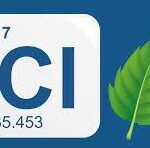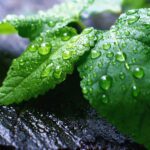Sodium (Na) is an abundant element in the natural environment and, like other elements that belong to the same group, it is not found in an elemental state because it reacts quickly with non-metals.

Deficiency
Sodium (Na) in addition to being a detrimental element for the soil structure, due to the dispersing effect of its particles, is toxic for crops since it produces a decrease in root growth and necrosis in the leaves. This occurs in high pH (alkaline) soils with poor drainage or by the use of irrigation water with high concentrations of sodium.
Toxicity
Sodium toxicity occurs in the form of necrosis or burning on the tips and edges of plants, as occurs in toxicity associated with micronutrients. Sodium toxicity (Sodium chloride), begins with premature yellowing of the leaves which leads to necrosis of the tips or edges of older plants; also produces tan.

Symptom
When the sodium content in a soil is very high, different types of damage can occur, such as:
• Slow and uneven seed germination
• Sudden wilting
• Growth retardation
• Marginal burns on leaves (especially lower and older leaves)
• Leaf yellowing
• Leaf fall
• Root death
• Restricted root development
• Gradual or sudden death of plants
It is important to say that the greatest effect produced by a high salt content in the soil is usually manifested in the roots, but damage could also be observed in the upper part of the plant. If the roots are affected by excess sodium, they are unable to absorb water and the plant ends up withering.
SALT AWAY in contact with soil particles, is associated trapping calcium, magnesium and sodium cations; highly concentrated elements in saline soils, solubilizing them and filtering the excesses out of the root development area, avoiding crop toxicity.
The immediate effect of SALT AWAY ingredients such as sulfur-potassium and sulfur-ammonium as soil improvers is achieved from the moment the product is applied to the irrigation water. The continuous use of SALT AWAY, allows to improve the productive capacity of agricultural soils.
 AgronoBlog – Agriculture Blog
AgronoBlog – Agriculture Blog 

